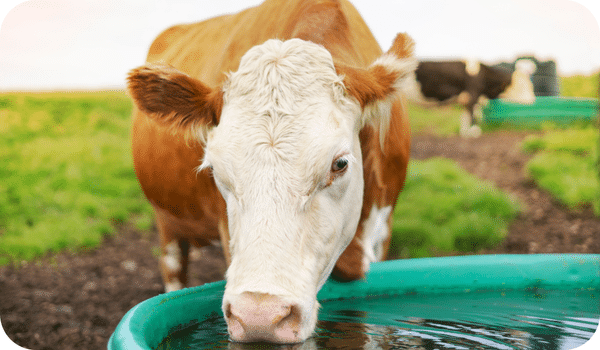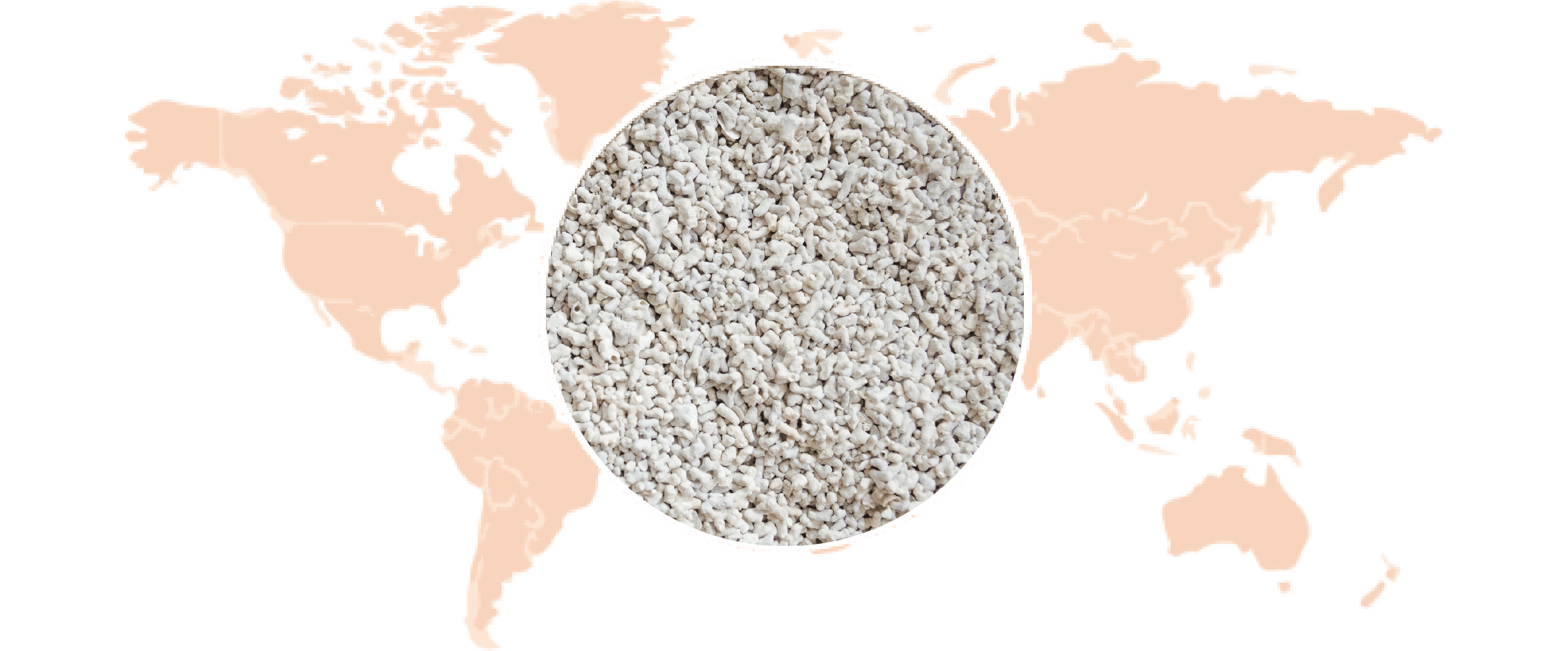A solution for remineralizing drinking water
Water is one of the primary feed for animals, and monitoring its quality is essential to meet physiological needs, avoid health risks, ensure livestock performance, and maintain the longevity of equipment.
Providing constant access to clean, fresh, and quality water is vital for the well-being of farm animals (Lemistre and Héliez, 2023).

Adequate conductivity indicates balanced water mineralization, which is essential for the health and growth of animals. Dissolved minerals, such as calcium, magnesium, and sodium, play a crucial role in biological functions, including digestion, osmotic regulation, and nerve transmission. Water that is too mineralized or insufficiently mineralized can lead to health problems, reduce growth performance, and affect production2. Therefore, ensuring optimal water conductivity is vital for keeping animals healthy.
Sources :
1IFIP, 2019 ; Anses 2010 ; NRC 2012 ; Kurup et al. 2011 ; ANSES 2010 ; Belay 2023 ; Conseil en Agriculture ; ITAVI 2010 ; ANSES 2010 ; ITAVI 202 ; Nursoy 2023
2https://www.bbzix.com/en/solids-in-water-one-of-the-physical-and-chemical-characteristics/
Phosphea offers a solution to optimize the quality of drinking water for livestock: TIMALITE Premium. It is a marine calcium source derived from a calcified red algae scientifically named Lithothamnium calcareum.
TIMALITE Premium acts as a filter, allowing rapid remineralization of water thanks to its calcium and magnesium composition. It is mainly suitable for acidic water with low conductivity.
| Parameters | Swine | Poultry | Ruminant | |
|---|---|---|---|---|
| pH | Lower limit |
|
Skeletal fragility Decrease in solubility of certain acidic antibiotics |
Implications for reproduction and production performance |
| Upper limit |
|
Inhibition of vaccines Increased proliferation of Gram-negative bacteria |
Implications for reproduction and production performance |
|
| Target | 6 - 8 | 5.5 - 6.5 | 6.5 - 7.5 | |
| Parameters | Swine | Poultry | Ruminant | |
|---|---|---|---|---|
| Conductivity | Lower limit |
|
|
|
| Upper limit |
|
|
Increase in cellular count in milk. |
|
| Target | 200-800 | 200-800 | 200-800 | |
| Parameters | Swine | Poultry | Ruminant | |
|---|---|---|---|---|
| Hardness | Lower limit |
|
Influence on egg shell quality Reduced solubility of sulfonamides |
|
| Upper limit |
|
Reduced solubility of certain antibiotics and vitamins Formation of insoluble complexes between calcium, magnesium ions, and active antibiotic molecules |
|
|
| Target | 10 - 15 | 10 - 15 | 10 - 15 | |
*The target pH for different physiological stages of swine production varies. An acidic pH (4-6) is recommended during post-weaning.

| Appearance | White |
| Particule size | 2 mm - 5 mm |
| Packaging | Bag / Big-Bag / Bulk |